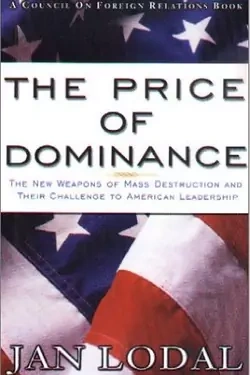
The Price of Dominance
The New Weapons of Mass Destruction and Their Challenge to American Leadership

- Book
- Foreign policy analyses written by CFR fellows and published by the trade presses, academic presses, or the Council on Foreign Relations Press.
President George W. Bush made clear early in his first term his intention to deploy a national missile defense as soon as possible to counter the growing threat of weapons of mass destruction (WMD). Jan Lodal argues that much more sweeping changes must be made in U.S. policy to deal effectively with WMD.
Lodal argues that, while the nuclear standoff between the Soviet Union and the United States is over, WMD remain the most serious threat to the security of the United States. The Information Revolution has spread the knowledge needed to develop these weapons and driven the globalization of commerce that makes export controls on them increasingly harder to enforce. As a result, the risk grows that rogue states and terrorist organizations may use nuclear, chemical, and biological weapons to oppose the United States. At the same time, China and Russia, even though they are no longer U.S. enemies, retain large nuclear forces that pose a potential threat.
More on:
The Price of Dominance identifies important changes that can be made in U.S. strategic policy to ameliorate the opposition of other powers to American-led efforts against WMD proliferation. Lodal proposes a strategic vision of strong deterrence coupled with open international cooperation around which President Bush could organize a U.S. policy toward WMD. Such an approach could develop wide support domestically and internationally. As a first step, the United States would modernize its nuclear doctrine by dropping "prompt retaliatory" war plans that, when combined with necessary future antiballistic missile systems, would give the United States a nuclear first strike capability. Dropping these plans would open up the possibility of a new approach to arms control and cooperation with Russia, China, France, and others in halting WMD proliferation.
A Council on Foreign Relations Book
More on:
 Online Store
Online Store